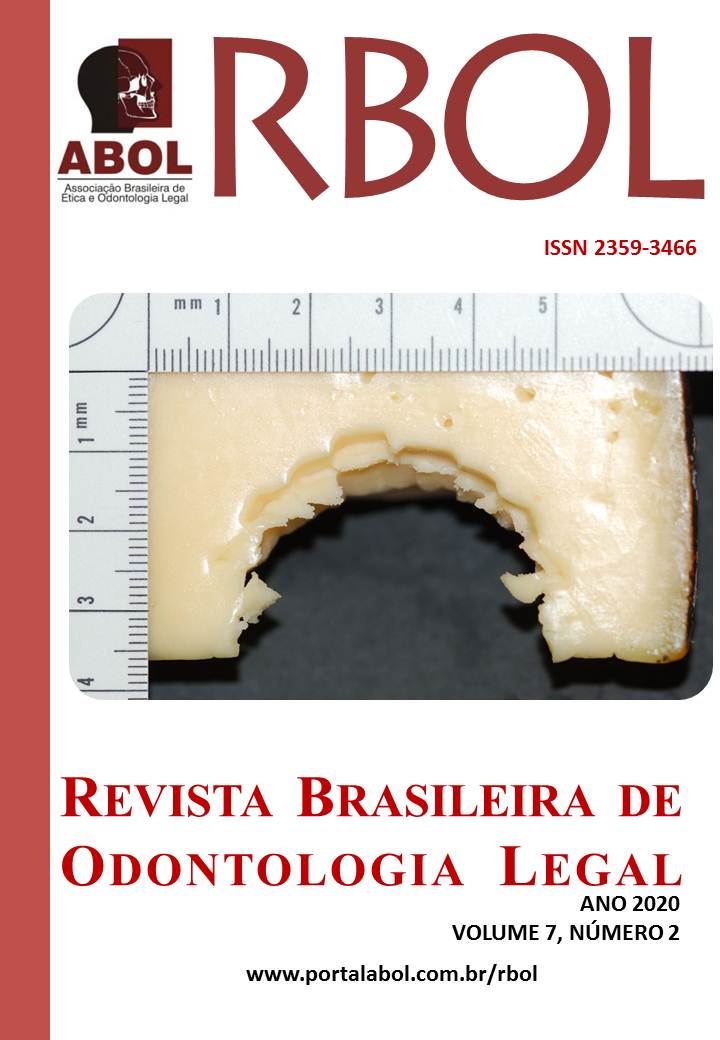Odontolegal identification by the use of computed tomography for implant planning - case report
DOI:
https://doi.org/10.21117/rbol-v7n22020-333Keywords:
Human identification, Tomography, Forensic DentistryAbstract
Postmortem human identification is an area of study and research of Forensic Dentistry. In this knowledge area, the most used kind of work is the comparison of ante mortem records (AM) with post mortem findings (PM). In cases of charred corpses, dental elements are generally capable of resisting thermal action. Thus, the imaging exams that make up the dental records, when in good quality, allow for comparison with the same tests performed on the corpse. The purpose of this article was to report a case in which the comparison of AM and PM computed tomography scans allowed the positive identification of a charred corpse. A comparison of AM tomographic images, used for reactive planning with dental implants, such as PM images, performed in the legal medical Institute of Federal District Civil Police, allowed, quickly, effectively and economically, a positive identification of the corpse due to the quantity and the quality of the indicated points found in images, associated with the absence of unexplained divergences.
Downloads
Published
Issue
Section
License
Os autores deverão encaminhar por email, devidamente assinada pelos autores ou pelo autor responsável pelo trabalho, a declaração de responsabilidade e transferência de direitos autorais para a RBOL, conforme modelo abaixo.
DECLARAÇÃO DE RESPONSABILIDADE E TRANSFERÊNCIA DE DIREITOS AUTORAIS
Eu (Nós), listar os nomes completos dos autores, transfiro(rimos) todos os direitos autorais do artigo intitulado: colocar o título à Revista Brasileira de Odontologia Legal - RBOL.
Declaro(amos) que o trabalho mencionado é original, não é resultante de plágio, que não foi publicado e não está sendo considerado para publicação em outra revista, quer seja no formato impresso ou no eletrônico.
Declaro(amos) que o presente trabalho não apresenta conflitos de interesse pessoais, empresariais ou governamentais que poderiam comprometer a obtenção e divulgação dos resultados bem como a discussão e conclusão do estudo.
Declaro(amos) que o presente trabalho foi totalmente custeado por seus autores. Em caso de financiamento, identificar qual a empresa, governo ou agência financiadora.
Local, data, mês e ano.
Nome e assinatura do autor responsável (ou de todos os autores).

